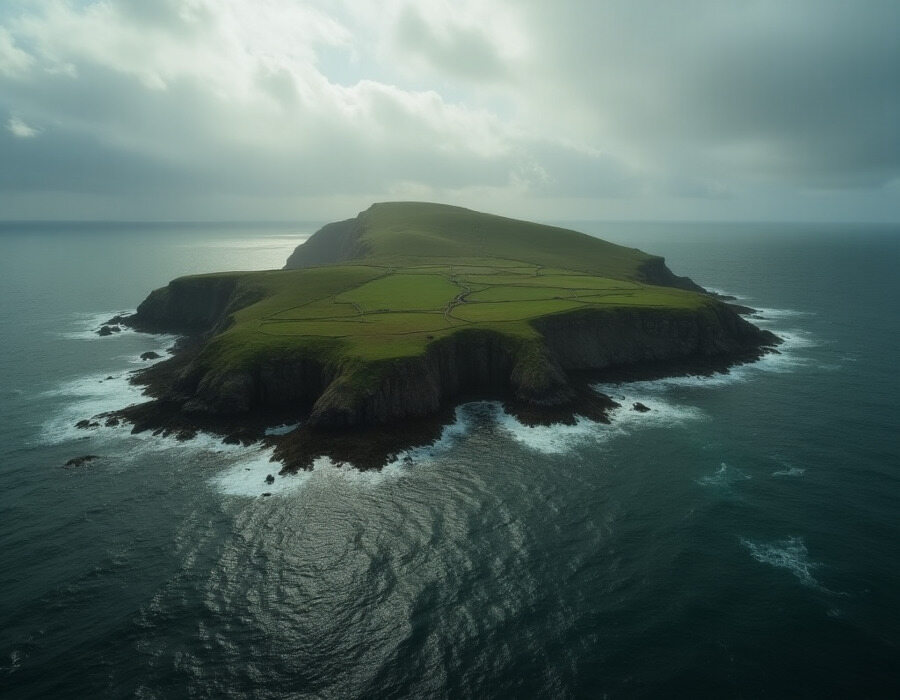Home » Spain Travel News » United Kingdom Breaks Silence on Gruinard Island as Deadly Anthrax Test Site is Declared Safe After Years of Military Secrecy and Environmental Restoration
Monday, July 14, 2025
After decades of silence and classified operations, the United Kingdom has officially revealed the full story behind Gruinard Island—a once-secret site used for biological weapons testing during World War II. Long contaminated by lethal anthrax spores following covert military experiments, the island remained off-limits to the public for over 40 years. Now, after an intensive decontamination effort and environmental restoration project, the government has declared the island safe, breaking its long-held secrecy and marking a critical chapter in the nation’s military and environmental history.
Gruinard Island: The UK’s Former Biological Battleground Now Safe After Years of Secrecy
The United Kingdom is made up of an immense and sprawling amount of islands—4,400 to 6,000 scattered about within its seas. While some are tiny and isolated, others are closely related to the country’s powerful historic, biological, and political histories. The biggest, Great Britain, is comprised of England, Scotland, and Wales. Beyond the well-known mass, though, is a profusion of lesser islands, each having a story as diverse as they are enigmatic and intimidating.
Among these lesser-known isles is Gruinard Island, once shrouded in secrecy and feared as one of the UK’s most dangerous places. Located off the northwest coast of Scotland, Gruinard was an uninhabited island that found itself at the epicenter of biological warfare experimentation during the Second World War.
Scotland’s Isle heritage
Scotland, to a greater extent compared to all the UK countries, can boast the majority of the nation’s islands. The nation boasts some of Europe’s most famous archipelagos, for instance, the Hebrides, Orkney, as well as Shetland Islands. As per a 2023 government report, 93 populated islands in Scotland were formally registered, and such famous names as Isle of Skye, Mull, and Lewis and Harris were in the list.
Despite the myriad of Scotland’s islets studded with life, the majority of Scotland’s coastal islets are uninhabited and untouched—with either their far-off locations or, in a small number of isolated cases, the lingering impacts of human occupation. Gruinard Island was thus an exception, etched in perpetuity in the history of British armed forces.
An Overtly Secret Mission in the Wake of War
In the 1940s, when the world was in the throes of the Second World War, the British administration was alarmed at the threat of biological attacks. As apprehensions grew about Nazi Germany either having developed or working on biological weapons, then-Prime Minister Winston Churchill requested an immediate response. The scientific establishment in the UK was tasked with the production of a biological arsenal for the country, and thus a secret operation was initiated on Gruinard Island.
The island was chosen because it was isolated and sparsely populated, making it the perfect site to conduct hazardous anthrax experiments. Under utmost secrecy, a team of scientists from the government embarked on testing the deadly anthrax bacterium—a toxic substance known to cause serious illness and death, especially when inhaled.
Perhaps most forebodingly, in perhaps the most tense moment in the operation, researchers detonated an anthrax-filled bomb in place by remote control, dispensing a cloud of the bacteria toward a flock of 80 sheep. The animals were acting as live test subjects, and all died from the bacteria within days. The test, purely from a military viewpoint, was a gruesome success. The island itself, though, was left irreparably contaminated.
Kept Secret from the Public for Generations
The fact that these experiments existed was not made public for more than five decades. Local people did not know about experiments being conducted just a stones throw from their coasts. The sheer extent to which the island was contaminated was not known until declassified Ministry of Defence footage was released. The deadly effectiveness in combat use of anthrax was graphically illustrated in the newly released film, which horrified people and raised demands for justice.
In spite of the lack of transparency, the whispers about the island’s somber history continued. It was not until 1981, when an environmental activist organization, Dark Harvest, organized an explosive demonstration, that the cause made national headlines. They took soil samples from Gruinard and brought them to testing facilities, insisting that the governing body would recognize and address the pollution.
The Road to Decontamination
Following mounting pressure, the government finally initiated efforts to decontaminate the island in the mid-1980s. Scientists who participated in the cleanup were given anthrax vaccinations and wore full protective gear to mitigate exposure. In 1986, an extensive project was launched to rid the island of lingering spores. The process involved soaking the land with a formaldehyde solution mixed with seawater and removing contaminated topsoil where necessary.
This decontamination process lasted for four years. Up to April 24, 1990, authorities formally declared Gruinard Island anthrax-free, opening the book on previously forbidden soil.
Gruinard Island, which was a closed British anthrax testing area in the Second World War, was pronounced safe after years of contamination and army mum. The UK finished an extensive decontamination project, putting an end to one of Britain’s blackest Second World War legacies.
The United Kingdom has officially declared Gruinard Island safe after decades of secrecy surrounding its use as a biological weapons testing site during World War II. Once contaminated with deadly anthrax, the island has now been fully decontaminated and restored.
A Spot of Infamy and Redemption
Now, Gruinard Island is a chilling testament to the ethical dilemma and existential threats posed in contemporary conflicts. Although no longer a biological threat, today it is still not inhabited and relatively avoided, as long as its gruesome history remains associated with the island. As the UK continues to search for and protect its island heritage, Gruinard is a case in point—one in which science, secrecy, and war met under the banner of national defense, leaving behind not just contaminated soil but also a lasting legacy of moral complexity.
